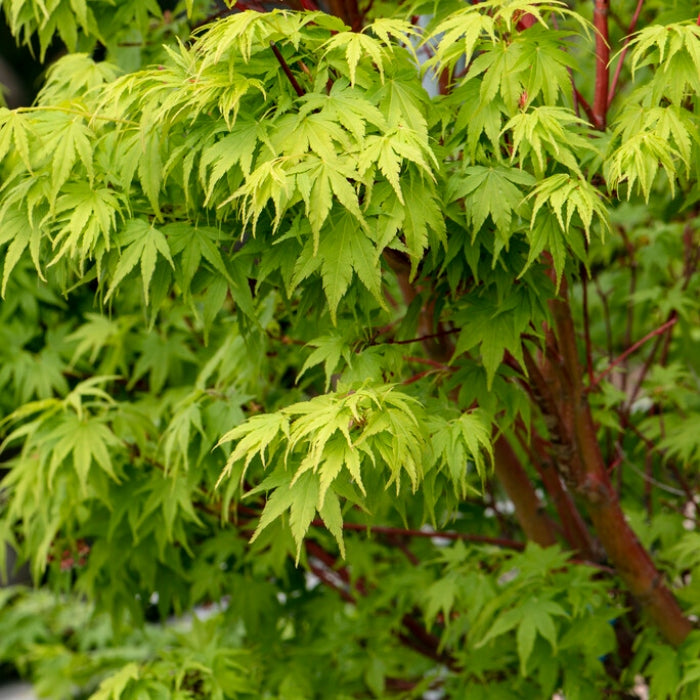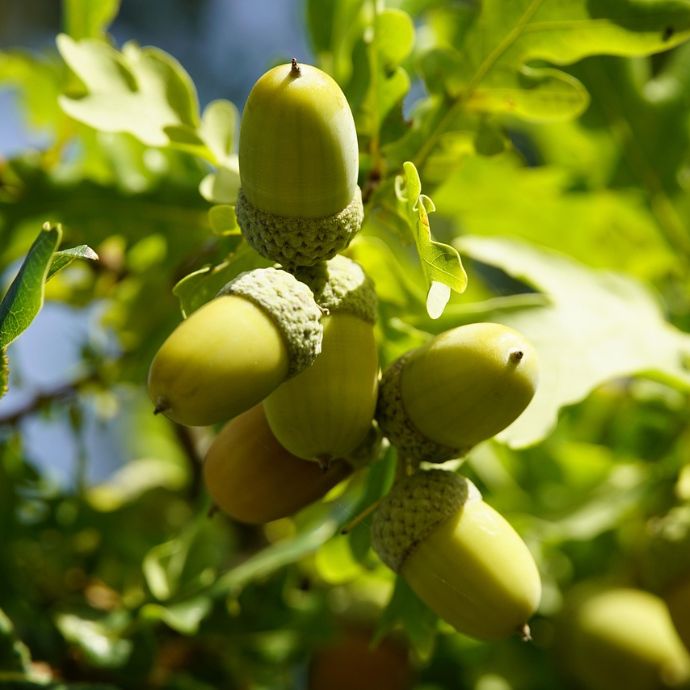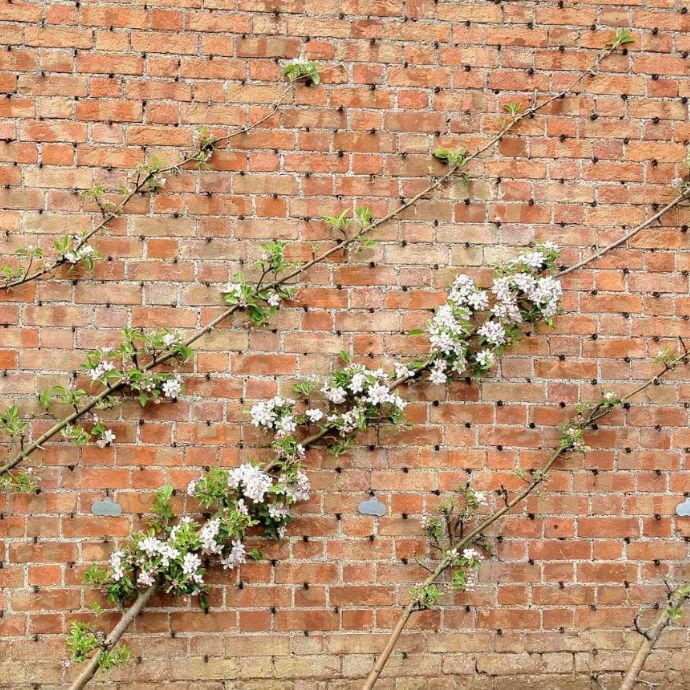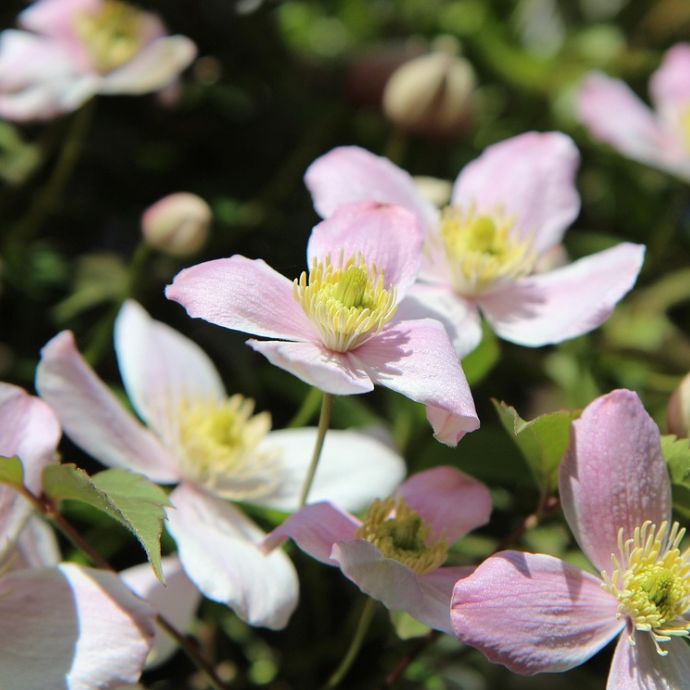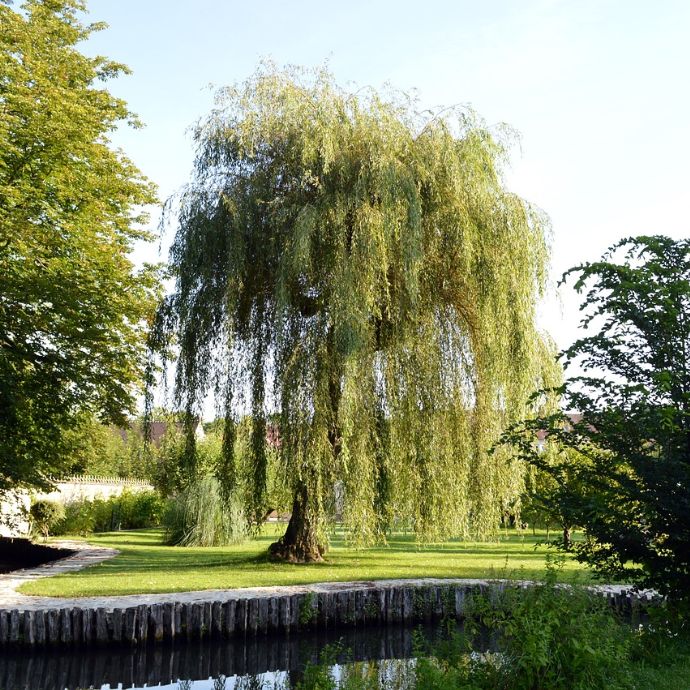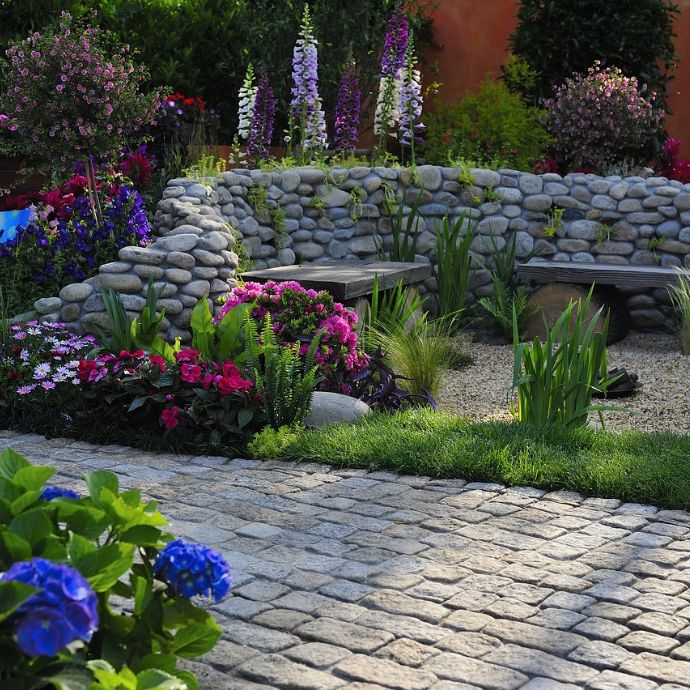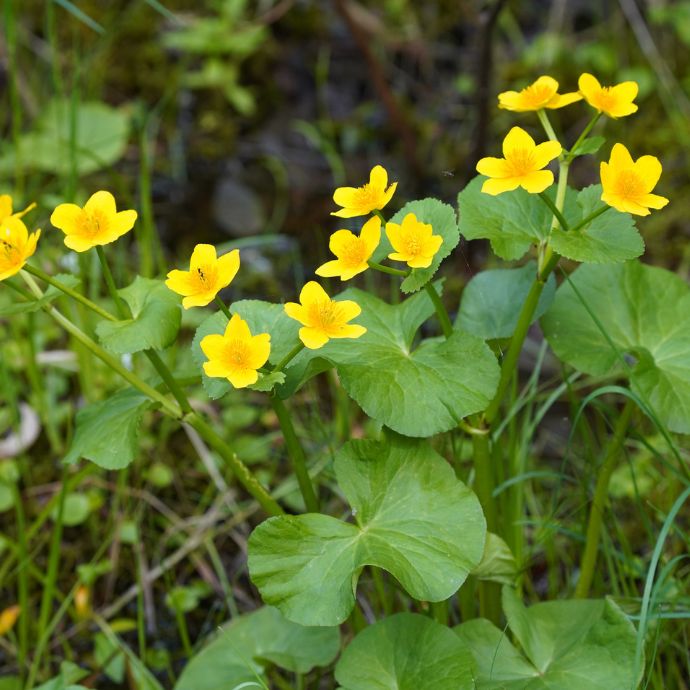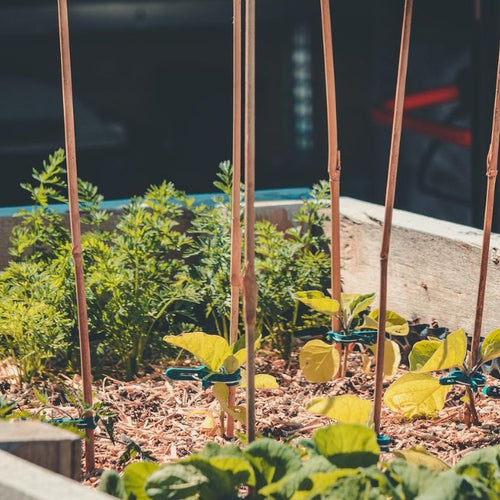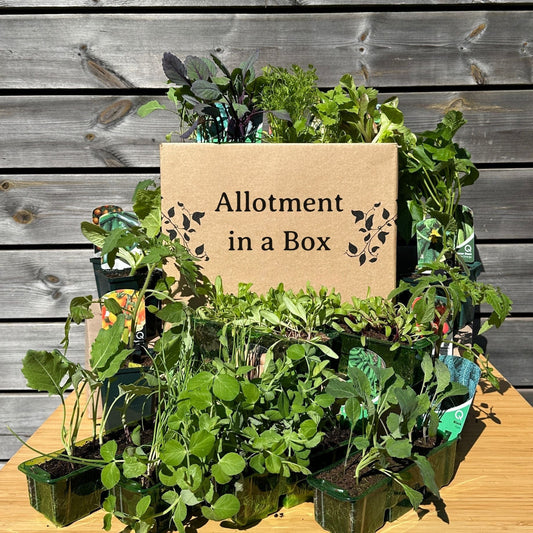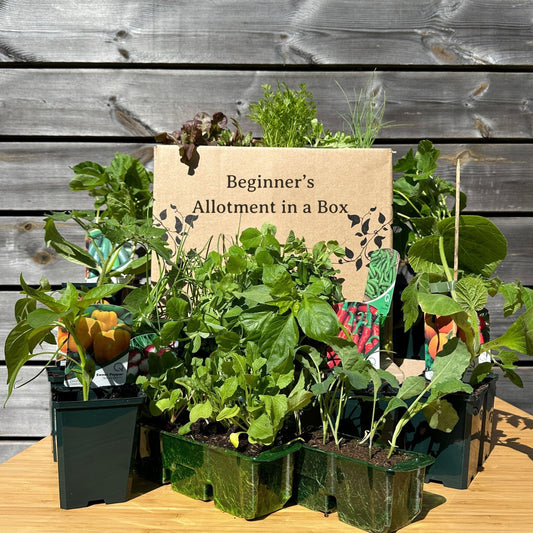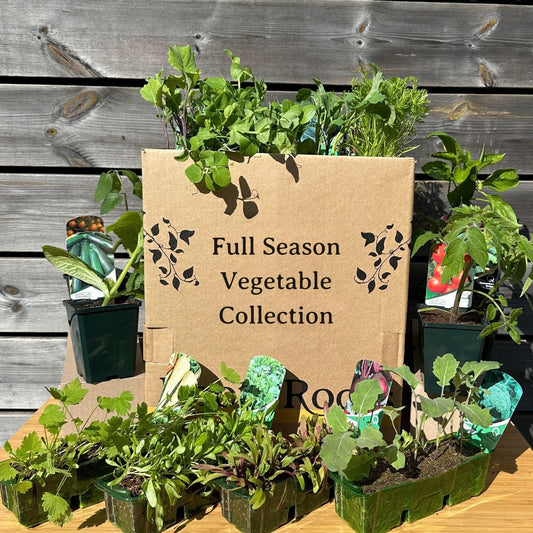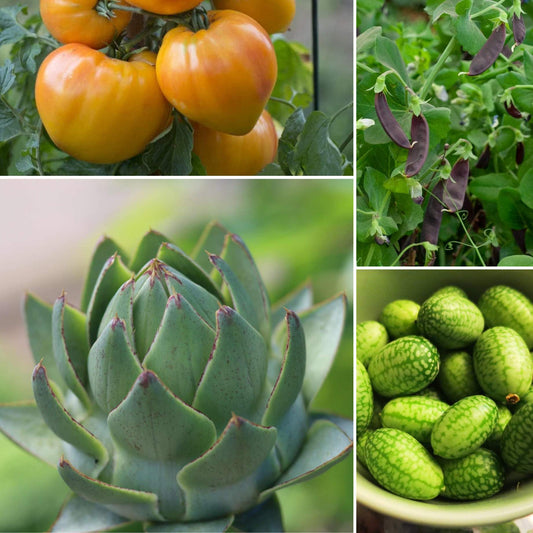Growing Cucumbers: The Complete Guide
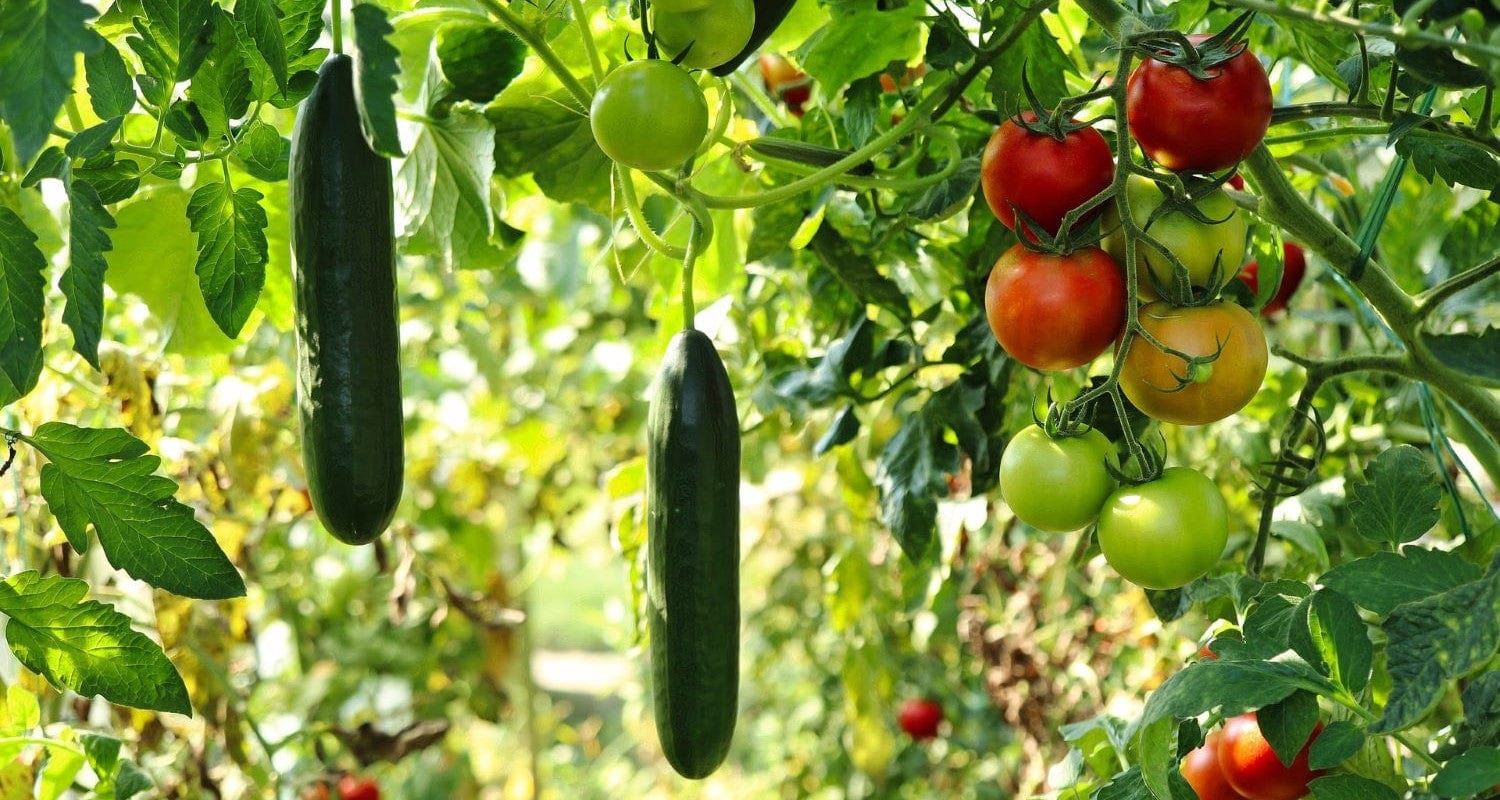
Cucumbers are one of the easiest vegetables to get started - the trick is knowing how to get the best from those plants once they start growing (and growing…!). Our vegetable experts have all the best tips on how to get to a successful cucumber harvest and how to avoid problems on the way, so after extensive picking of their brains, here’s everything you need to know about how to grow cucumbers from seed or plants, indoors or out.
Jump to:
- Which cucumber?
- Growing from seed
- Growing from plants
- Growing in pots
- Indoors or outdoors?
- Supporting cucumbers
- Harvesting
- Storing
- Problem solving
Which cucumber plants to choose
All cucumber plants grow in roughly the same way, so choose one according to where you’ll be growing it (indoors or out) and the kind of cucumber you like to eat best. Depending on where you’re planning to grow your cucumbers, check the plant info to make sure your choice is suitable for growing indoors or out. The other main difference is in size - traditional full sized varieties like Kuper and Ridge Perfection are great for slicing and juicing, whereas snack varieties like Mini Hana are a good choice for lunchboxes or pickling. All female varieties like Femspot will naturally produce more fruits.
If you’re feeling particularly adventurous, you can try growing a cucamelon plant - cucamelons are a cross between a melon and a cucumber, but tiny (and really fun).
Growing cucumbers from seed
Cucumbers are quite easy to grow from seed - make sure you choose the right kind for growing indoors or out according to where you plan to grow them. The best time to plant your seeds is in early spring, but starting in late February is fine if you’re growing under cover in a warm place.
Plant one seed per pot and use a good quality multi purpose compost. Cucumber seeds need plenty of heat to germinate (at least 20°C is best) so it’s a good idea to use a heated propagator or seedling heat mat, and keep them in a warm area. When your seeds have developed two or more true leaves (the second pair that form after the seedling emerges) you can pot them on into larger pots. If you’re growing outdoor varieties, make sure to harden off your plants and wait until after the last frost in your area before planting them outside.
Growing cucumbers from plants
If you’d rather skip all that palaver (or you want to get a head start) you can buy your cucumbers as young plants which can be grown on in pots or planted straight into their final positions. Outdoor varieties should be hardened off (gradually introduced to the great outdoors for increasing lengths of time and brought back in at night) then planted out only after the last frost date has passed. This varies according to where you live, and can be checked here.
Indoor varieties should be planted in their final pots as they don’t like to be moved once established.
What’s a grafted cucumber?
Grafting is where the plant breeder joins together two different vegetable plants which have certain qualities (such as disease resistance or vigorous growth) to produce a plant with the best features of both.This can really benefit more tender vegetables such as cucumbers.
Grafted plants tend to have better root systems, which means the plants can take up more water and nutrients from the soil, growing bigger and producing more fruit. Many of them also seem to crop for a longer period of time.
If your soil isn’t the best or you live somewhere with adverse weather conditions, you might want to consider using grafted cucumber plants, especially if you’re planning to grow them outdoors - they’ll stand up to more drought, heat and cold than non-grafted plants, saving you money and disappointment.
When can I plant cucumbers?
You can plant cucumber plants in a greenhouse from April, and even March if it is heated.
When you plant cucumbers depends on what variety of cucumbers you have and whether or not you have a greenhouse. Check the plant info of your particular cucumber plant to see exactly when you can plant your cucumber plant and where. If you’re planting cucumbers outside, May is fine if it’s a particularly hot year, but if not it’s best to wait until June.
Cucumbers prefer temperatures that are consistently around 20°C and therefore will not do well outside before mid-summer. They also prefer a decent level of humidity which is why people tend to prefer growing them in greenhouses as this can be more easily controlled. Several varieties, however, are more hardy to the UK climate and do well grown outside.

How much sun do cucumbers need?
Cucumber plants need plenty of heat and light to thrive, so choose a warm greenhouse, conservatory or windowsill for your indoor plants, or a sheltered sunny spot outdoors (preferably south facing) where your plants will get a full six to eight hours of sunlight daily throughout the growing season.
Where should I position my cucumber plants?
Make sure your cucumber plants are in a spot free from cold winds and frost. If you’re growing them vertically up a support, plant them 45cm apart, and if growing on the ground, 90cm apart.
How much water do cucumber plants need?
Cucumbers are thirsty plants and need to be regularly watered. This is really important as water-deprived cucumber plants produce stunted and bitter tasting fruits. Check your plants regularly (especially those indoors or in pots) and water deeply if the soil is dry below the surface. On hot summer days you’ll probably need to water every day.
How to feed cucumber plants
When you first plant your cucumbers or pot on your seedlings, start them off with a sprinkle of general purpose plant food, unless your compost already contains some. When the flowers start to appear, that’s when your plant really needs a regular feeding schedule. Potash is what your plant needs to develop fruits properly, so you’ll need to use a high potash (or potassium) feed such as tomato fertiliser every week. Banana skins are high in potassium too, so cutting them up and adding them to the soil will give your plants a boost.
What kind of soil do cucumber plants need?
Cucumber plants do best in a fertile, well-draining soil. If you’re really well prepared you can give them a head start by laying well rotted manure to your soil the autumn before you plant them, but don’t worry if not. Plant your cucumbers, whether in the ground or in pots, in a mixture of one part topsoil to three parts compost. Cucumbers also benefit from a mulch which will help keep moisture in the soil and prevent weeds spreading, while providing nutrients to the plant. For your mulch, you can use well rotted manure, leaves, straw, woodchips or even just compost.

How to grow cucumbers in pots
Cucumbers grow really well in pots if the conditions are right. When you first pot on your seedlings, a 9cm pot will be sufficient for each one - they’re pretty fragile when young, so take care not to break the stems. Use a good quality compost, firm down the soil around the plant gently by hand and give your plant a watering.
After a short while the plants will reach about 15-20cm tall - time to pot them on to their permanent homes! Choose pots which are at least 30cm deep and wide (15L) and add a support such as a bamboo cane, or plant them next to a trellis and tie them in.
Your plants will be perfectly happy kept indoors, but you can move the pots to a sunny patio from June onwards (outdoor varieties only) if you prefer.
Growing cucumbers: indoors vs outdoors
What’s the difference between indoor and outdoor cucumber varieties, and is one better than the other? It all depends on what type of cucumbers you prefer. Indoor cucumbers tend to have a sweeter, milder flavour and yield 5-10 fruits per plant, whereas outdoor cucumbers can produce 10-20 or even more and are usually firmer with a stronger flavour.
In terms of growing conditions, indoor cucumbers need even more light than outdoor varieties - as much as twelve hours a day in summer - and they won’t perform at their best without constant warmth. They also like a higher humidity, so misting them with a water spray helps them to fruit better. Outdoor cucumbers are more adaptable to variations in temperature compared with their indoor friends.
There’s another crucial difference in how you care for each type - if you’re growing indoor cucumbers, you’ll need to remove the male flowers, as these varieties are self pollinating and allowing them to be insect pollinated can result in a bitter taste. How can you tell which are the male flowers? They only have a stem, whereas you’ll be able to see a tiny cucumber growing under the female ones (and some F1 varieties only have female flowers so that’s a job saved).
Outdoor cucumbers need both types of flowers left on, as they’re pollinated by insects.

Do cucumber plants need support?
Cucumbers are climbing or trailing plants which need support to help them support the weight of their fruits.
Most cucumbers are grown vertically - if you’re growing yours this way, train the main stem of the plant up a strong support such as a garden cane or tie it in to a trellis, mesh or wires stretched across your wall or fence. The stems are quite fragile, so take care when tying in your plant and use soft twine, string or pipe cleaners.
Alternatively, cucumbers can be grown along the ground where they will sprawl much like pumpkin plants do. If planting this way, space your plants 90cm apart in the ground and raise the developing cucumbers off the ground using bricks, pieces of wood or similar, to prevent them going mouldy on the wet soil.

How to prune cucumber plants
As above, depending on the variety of cucumber plant you have, you may need to remove the male flowers.
If you’re growing cucumbers vertically, once the plant has grown to the top of their support, you can prune back the main stem. If a side shoot has produced two leaves after a cucumber, you can prune away any further growth from this stem. This will encourage more side shoots to grow and more cucumbers, rather than the plant putting its energy into growing more foliage. Cucumbers grown along the ground as sprawling plants won’t need any pruning.
How to harvest cucumbers
Cucumber plants generally take 2-3 months to harvest after you’ve planted them.
They will be ready to harvest from July through to October. You can simply cut them off with a sharp, sterilised knife or scissors once they reach the size you want. The sooner you harvest the cucumber, the sooner the plant will get on with growing a new one, so be sure to harvest regularly for lots of fresh cucumbers!

How to store cucumbers
Freshly harvested cucumbers will keep for around a week at room temperature and up to two weeks in the fridge - the crisper drawer is the best place. Unfortunately the storage options are pretty limited after that, as their water content is too high to freeze them (they’ll turn to mush). You can however pickle them successfully - whole or in vertical wedges in the case of mini cucumbers or in slices for larger varieties.

Cucumber plant problems
The main cucumber problems you might encounter are whitefly, aphids, cucumber mosaic virus, powdery mildew and the sinister sounding squash anthracnose. Diseases and mildews are more common in outdoor cucumbers, while pest issues such as whitefly and aphids mainly affect indoor plants.
Cucumber Mosaic Virus
Cucumber Mosaic Virus appears as yellow blotching on the leaves and can cause the fruit to become deformed and blistered. Gross.
It’s spread by contact from contaminated hands and tools, pollen or aphids. There’s not much you can do about the aphids and pollen, but you can help by washing your hands regularly and cleaning tools between pruning each plant.
If your cucumbers are infected, remove and bin the plants, then clean all your tools thoroughly.
Whitefly
Whiteflies look like small white moths and are most commonly found on the underside of leaves. If left to their own malign devices they will feed on the leaves, damaging them and turning them yellow. Your best defence against whitefly is to simply spray your plant down with some water or a mix of water, vegetable oil and soap, aiming it at the whiteflies to try and wash them off. Make sure you check the whole plant and get as many of the fiends off as possible.
You can also plant companion plants such as marigolds near your cucumbers. Marigolds deter whitefly as well as attracting ladybirds and hoverflies which will come and feast on the pests.
Aphids
Aphids are small green bugs that cluster on the plant stems, particularly at the joints, and also the underside of leaves. They cause leaves and fruit to become discoloured and misshapen. Aphids also leave behind a sticky residue known as honeydew which can then promote the growth of a fungus known as sooty mould. Delightful.
Like whiteflies, ladybirds and hoverflies enjoy eating aphids so planting marigolds nearby will help control them. You can also use soapy water to blast the aphids off the plant. Effective and cathartic.
Powdery Mildew
Powdery Mildew is a fungal disease that usually attacks the leaves and stems of a plant, leaving a white powdery residue. It can cause stunted growth and affect crop yields.
Powdery mildew thrives in damp, humid conditions. To prevent it from affecting your plant, always water at the base of the plant in the morning so there’s enough time for the surface water to evaporate, and try to prevent splashing from the ground to the leaves.
If your plant is suffering from powdery mildew, prune away infected leaves at the stem with a sharp, sterilised tool. Be sure to sterilise the tool before touching another part of the plant or other plants in your garden as this can cause the infection to spread. You can then spray the plant down with a mix of one teaspoon of baking soda mixed with a litre of water to prevent further occurrences.
Squash Anthracnose
Squash Anthracnose is a fungal disease that causes brown spots to appear on the leaves, which can also become yellow and wilted, eventually falling off. The cucumbers themselves can also become sunken and rotten.
It’s caused by wet weather, but you can help to prevent it by ensuring there is good air circulation around the plant and enough space in between plants. You should also water in the morning as above.
If your plant is suffering from anthracnose, prune away infected leaves at the stem with a sharp, sterilised tool, then sterilise the tool before touching another part of the plant or other plants in your garden as this can cause the infection to spread. Burn the leaves or bin them, don’t put them in the compost. If more than a third of the plant is infected you may have to give up and bin it.
Last updated: 21/02/2024
